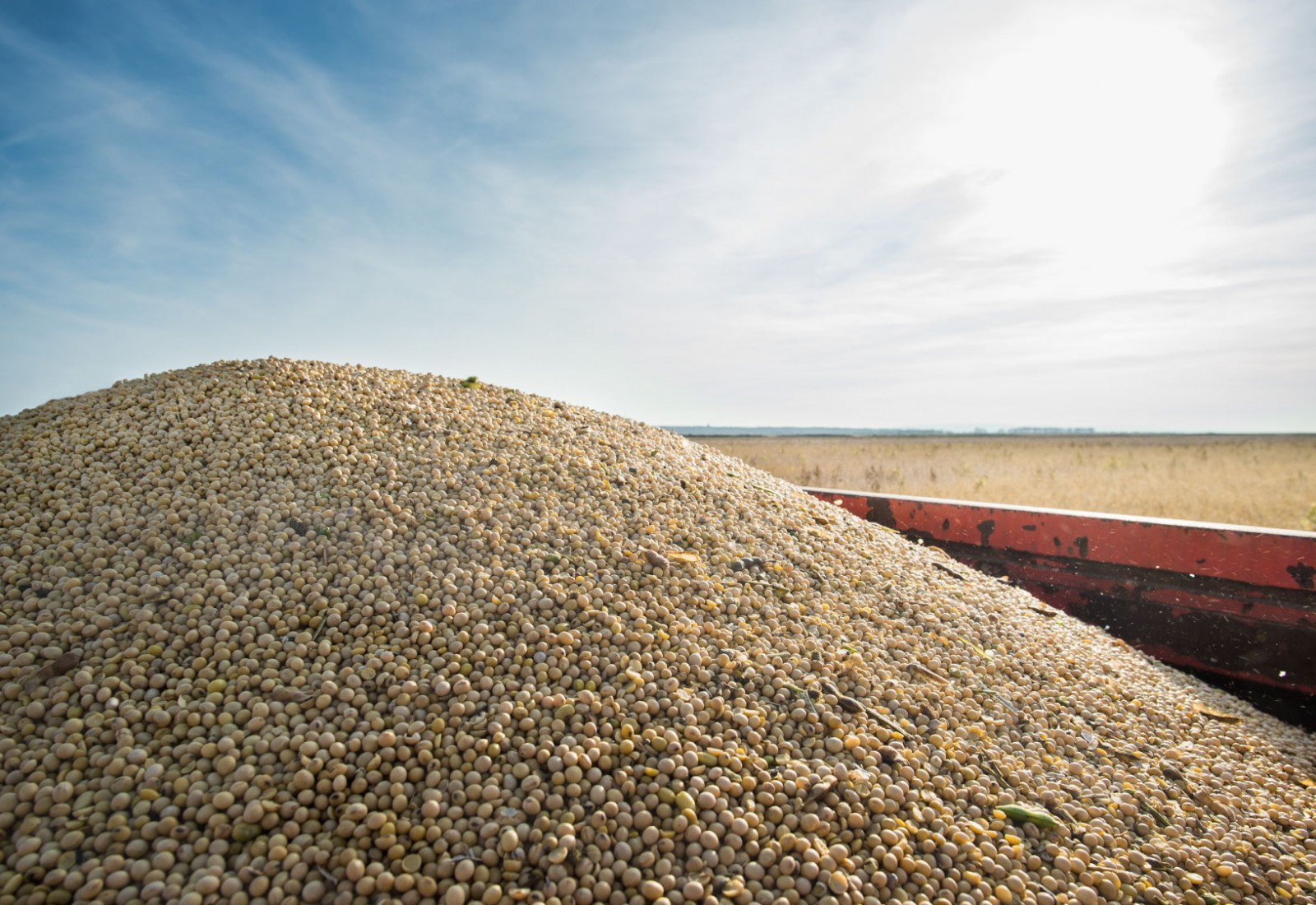Marketing Soybeans This Fall

By Bruce Barker
Supply, demand, and managing the unknown.
In September, the soybean market will be fairly clear for Prairie soybean growers with a good understanding of how the U.S. and Canadian soybean crops are looking. So, what should Prairie soybean growers be looking at as they move to harvest and market their crop through the fall and winter months?
The first assumption is that growers have priced in some of their soybean crop prior to harvest. With cash prices in Manitoba above $10.00 per acre throughout the spring, marketing consultants recommended pricing in 25 percent or more of the new crop earlier this year, depending on risk tolerance.
“Pre-selling a portion of the crop is critical so that a grower has more flexibility in the fall marketing season. You don’t want to be in a position where you have to sell directly off the combine because traditionally there is a seasonal decrease in prices as the soybean harvest begins in North America,” says Jonathon Driedger, senior market analyst with FarmLink Marketing Solutions in Winnipeg, Manitoba.
Look to production estimates
United States growers planted record acreage of soybeans in 2017. As the harvest comes off in September and October, final production numbers will start to emerge. Likely, these production estimates have been priced into the market over the summer. Barring any unforeseen production problems over the summer, September prices will possibly be lower. However, John Duvenaud, publisher of Wild Oats Grain Marketing Advisory newsletter in Winnipeg, Manitoba, says that there are positives that may support the soybean market into the fall.
“The main reason not to be too glum about 2017 soybean prices is that the projected American 2017 crop (4,255 M bu.) is actually smaller than the 2016 crop (4,307 M bu.). The 2016 crop was a bin-buster due to all the rain in August,” says Duvenaud. “Current (June 2017) Western Canada bids are about $10.50, old and new crop. I’d be surprised to see these levels hold but probably $9.50 will still be available this coming winter.”
The USDA reported in June an estimation that global soybean production for 2017/18 would be 348.04 million metric tonnes. Last year, global soybean production was estimated at 313.05 million tons. This year’s 348.04 estimated million tons could represent an increase of 34.99 million tons or an 11.18 percent in soybean production around the globe.
It’s June and U.S. soybean supply and use projections for 2017/18 show little change from May. Soybean ending stocks for 2016/17 were projected at 450 million bushels, up 15 million from last month. Ending stocks for 2017/18 are also raised 15 million bushels to 495 million. Where these projections end up will depend on growing conditions in the U.S. over the summer.
Driedger says that the big factor in soybean production in the U.S. is August growing conditions. Given normal August weather, market prices for the fall should be fairly evident by September. “Typically, prices come under pressure in September and October, but there can be small market rallies through the winter as supply and demand become clearer.”
The next supply factor to look for is South American soybean planting and growing conditions. In September, early soybean planting begins in the Mato Grosso and central regions of Brazil. In October and November, soybean planting is in full swing. The crop progresses throughout December with harvest occurring in the first quarter of the New Year.
In June 2017, the USDA was predicting that beginning stocks combined with a 0.5-million-ton reduction to Argentina soybean exports in 2017/18 would result in a 3.4-million-ton increase to 92.2 million to global soybean stocks at the end of the 2017/18 marketing year. How that plays out is weather dependent, both in the U.S. and in South America.
“If market prices in September are lower, that may impact South American soybean planting. Seeded acreage and growing conditions in South America will have an impact on prices,” says Driedger. “In the fall, growers should be looking at these factors to see if there may be opportunities for higher prices further out.”
Chinese demand
China purchases two-thirds of global exports. China typically purchases from North America throughout the fall and early winter months, and then shifts purchases to South America when its crop starts to come off in late winter. China’s soybean imports have grown for 13 years in a row and the USDA expects them to hit 87 million tonnes in the year ending Sept. 1. The next-biggest importer is the European Union – at around 13.80 million tonnes in the 2016/17 crop year.
“The saving grace is Chinese demand. Chinese imports have tripled over the past ten years and don’t seem to be easing off,” says Duvenaud.
Unknowns
Pulling supply and demand information together in the fall and early winter will help guide soybean growers on their market opportunities. Driedger says that unforeseeable political instabilities can impact prices in the short-term, as shown by the political upheaval in Brazil earlier this year when the Brazilian currency dropped 8 percent and led to one of the largest selling days in Brazil over the last few years.
“Currency has a huge impact on prices. Political events are impossible to predict, but are frequent enough that market disruptions can pop up,” says Driedger. “The best a grower can do is to be in a position to take advantage of, or minimize, the impact on prices by having a marketing plan and staying informed.”
Given that most market decisions are based on what is known today and a fuzzy crystal ball for supply and demand projections in the future, staying on top of global markets is important for maximizing market returns. But looking locally is where it pays off.
“The best indicator for a farmer is the price that the two or three local merchants are paying. There is a mountain of market price information out there but local prices are the only thing that really matters to a farmer,” says Duvenaud.


